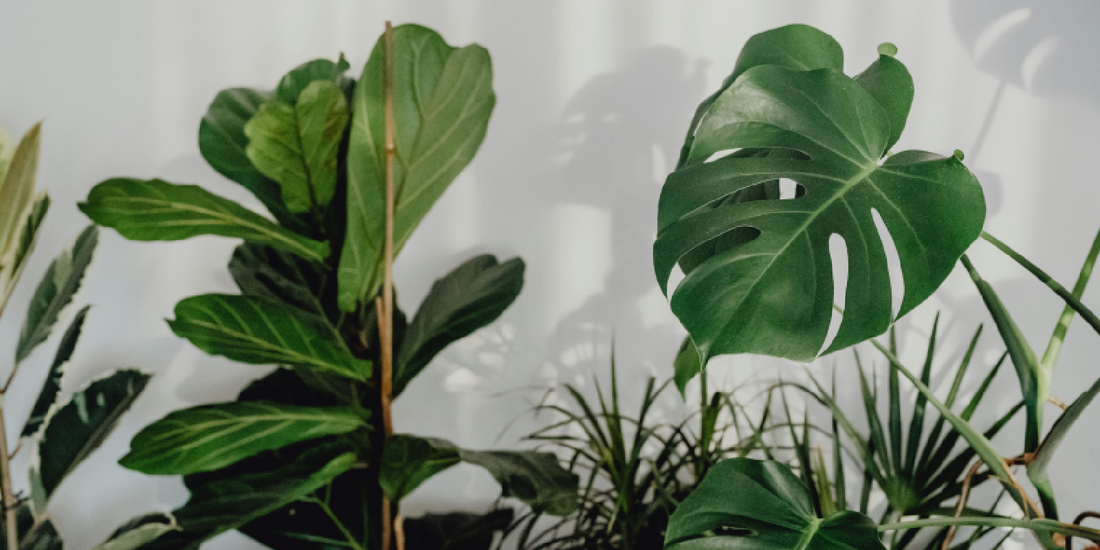
How to Transition from Natural Light to Grow Light
Share
Indoor gardening has evolved into a thriving practice for plant lovers across the world. While natural sunlight remains the primary source of energy for most plants, not every home has the right windows, orientation, or climate to provide consistent lighting. That’s where grow lights come in. Learning how to transition from natural light to grow light can ensure your plants thrive year-round, regardless of season or weather.
If you’re considering moving from windowsill sunlight to artificial grow lights, this guide will help you understand when, why, and how to make the change. And if you’re looking for a practical, stylish option to support your plants, the VerdantGlow S-Shaped 8-Tier Plant Shelf with Grow Lights by amoyls is designed for exactly this purpose, combining modern design with functional grow lighting.
Why Consider Transitioning from Natural Light?
Natural light is free, abundant, and efficient. However, not every plant parent can rely on it. You might need to supplement or replace natural light in cases like these:
- Limited Sunlight Exposure: Apartments facing north, shaded gardens, or homes in cloudy climates may not provide enough sunlight hours.
- Seasonal Changes: Winter months often bring shorter days, weaker light, and reduced sun intensity.
- Window Restrictions: Some homes have tinted windows, limited windows, or layouts that block sunlight.
- Specific Plant Needs: Tropical or flowering plants often require stronger, more consistent lighting than what a window can provide.
Making the shift to grow lights ensures your plants receive the optimal conditions to thrive no matter where you live.
Understanding How Plants Use Light
Before jumping into grow lights, it’s important to know how plants use light. Photosynthesis requires light in the red and blue spectrum, with red light stimulating flowering and fruiting, while blue light encourages leafy growth.
Natural sunlight provides a full spectrum of light, but artificial grow lights can be designed to replicate this balance. Modern LED grow lights, like those integrated into the VerdantGlow S-Shaped 8-Tier Plant Shelf with Grow Lights, are tailored to provide plants with the exact wavelengths they need for growth.
Signs Your Plants Need More Light
It’s not always obvious when plants are underperforming due to lack of sunlight. Here are signs to look for:
- Leggy growth with long stems and few leaves.
- Yellowing or pale foliage.
- Slow or stunted growth.
- Lack of flowering or fruiting.
- Leaves bending toward the nearest light source.
If you notice these symptoms despite placing your plants near a window, it may be time to transition to grow lights.
Types of Grow Lights Explained
Transitioning means choosing the right grow light for your needs. Here’s a breakdown of the most common options:
- Fluorescent Lights: Affordable and suitable for seedlings and herbs, but less energy-efficient long term.
- Incandescent Lights: Outdated, energy-draining, and not ideal for serious plant growth.
- HID Lights: High-intensity discharge lamps, effective but expensive and hot.
- LED Grow Lights: Energy-efficient, long-lasting, and customizable to plant needs.
For most home gardeners, LED grow lights are the best option, and they’re integrated directly into products like the amoyls VerdantGlow Shelf, making setup simple and effective.
Step-by-Step Guide: Transitioning to Grow Lights
Switching from natural sunlight to grow lights isn’t just about flipping a switch. Here’s a step-by-step approach:
1. Evaluate Current Plant Placement
Take note of which plants get the most light and which ones struggle. Decide whether to supplement light or completely replace it.
2. Start with Supplemental Lighting
Instead of moving plants away from windows immediately, begin by adding grow light hours in the evening or on cloudy days. This eases plants into the new lighting environment.
3. Gradually Extend Light Hours
Most plants need 12–16 hours of light daily. Slowly extend artificial light hours while reducing reliance on natural light, ensuring plants don’t get stressed by sudden changes.
4. Position Lights Correctly
Keep lights at the recommended distance:
- 6–12 inches for seedlings.
- 12–24 inches for mature plants.
The S-Shaped 8-Tier design of the amoyls VerdantGlow Shelf ensures adjustable spacing so each plant receives proper illumination.
5. Monitor Growth
Watch leaf color, growth rate, and general health. Adjust lighting duration and intensity as needed.
6. Create a Consistent Routine
Plants thrive on consistency. Use a timer to mimic natural day-night cycles and avoid forgetting to switch lights on or off.
Benefits of Using a Grow Light Shelf
When transitioning, it’s not just about the light—it’s also about how you organize your plants. The VerdantGlow S-Shaped 8-Tier Plant Shelf with Grow Lights offers key advantages:
- Even Light Distribution: Every tier receives balanced exposure.
- Space-Saving Design: Vertical shelving maximizes plant capacity without crowding.
- Stylish Integration: Minimalist, modern aesthetics that enhance any interior.
- Built-In Grow Lights: No need to worry about fixture placement or compatibility.
By combining lighting and shelving, the VerdantGlow unit simplifies the transition process for new and experienced plant owners alike.
Common Mistakes to Avoid During Transition
- Placing lights too close: Can burn leaves.
- Leaving lights on 24/7: Plants need a dark period to rest.
- Ignoring heat buildup: Even LEDs can slightly raise temperatures—ensure good ventilation.
- Mixing incompatible plants: Group plants with similar light needs together to avoid stressing them.
Transitioning for Different Plant Types
Different plants respond differently to light changes:
- Leafy greens (basil, spinach, lettuce): Adapt easily; benefit from 12–14 hours of light.
- Flowering plants (orchids, African violets): Need consistent red light to bloom.
- Succulents and cacti: Require bright, intense light—LEDs are ideal.
- Tropical foliage plants (monstera, philodendron): Do best with steady, moderate light without extreme fluctuations.
The versatility of multi-tier grow light shelves makes it easier to separate and manage diverse plant types.
Final Thoughts: From Sun to LED Glow
Transitioning from natural sunlight to artificial grow lights may feel like a big step, but it opens the door to year-round growth, healthier plants, and more flexibility in home design. With the amoyls VerdantGlow S-Shaped 8-Tier Plant Shelf with Grow Lights, you don’t just replace the sun—you enhance your indoor gardening experience with an elegant, functional solution.
By understanding your plants’ needs, monitoring their growth, and providing consistent artificial light, you can create a thriving indoor jungle no matter where you live or what season it is.
